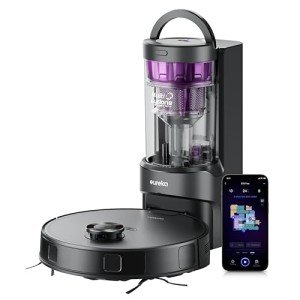The Rise of Automatic Hoover Robots: Revolutionizing Home Cleaning
In today's hectic world, technology continues to reshape the method we live and work. Among the developments making a considerable effect on households are automatic hoover robots, frequently described simply as robot vacuums. These intelligent cleaning devices guarantee not only benefit however also effectiveness in maintaining tidy home. This post explores the development, advantages, limitations, and future of automatic hoover robots.
The Evolution of Automatic Hoover Robots
The idea of automated cleaning devices dates back to the early 20th century, but it wasn't till the introduction of advanced robotics, sensing units, and expert system that robot vacuums became feasible. The following table illustrates essential turning points in the evolution of automatic hoover robots:
| Year | Milestone |
|---|---|
| 1996 | The very first automatic vacuum is presented by Electrolux. |
| 2002 | iRobot launches the Roomba, a consumer-grade robot vacuum. |
| 2010 | Introduction of sophisticated mapping technology and accident sensors. |
| 2016 | Robotic vacuums begin integrating with smart home systems. |
| 2020 | Increased adoption of AI and device knowing for better cleaning algorithms. |
How Automatic Hoover Robots Work
Automatic hoover robots operate using a combination of sensing units and algorithms to browse household areas. Below are key elements that contribute to the performance of these devices:
- Sensors: Lidar (light detection and ranging), infrared, and cliff sensors help the robot map the location and prevent obstacles.
- Mapping Technology: Many designs now offer advanced mapping capabilities, enabling efficient navigation through rooms, identifying high-traffic areas, and remembering the design of your home.
- Cleaning Modes: Most robot vacuums feature multiple cleaning modes, consisting of spot cleaning, edge cleaning, and methodical navigation.
- App Connectivity: Many modern-day designs permit control through smart device apps, allowing users to arrange cleansings and tailor settings remotely.
Advantages of Automatic Hoover Robots
Automatic hoover robots offer a wide variety of benefits, making them attracting a substantial number of customers. Here are some engaging benefits:
- Time-Saving: Users can arrange cleanings and multitask while the robot does the work.
- Constant Cleaning: Regularly arranged cleanings make sure that homes stay tidy.
- Availability: Robots can clean hard-to-reach areas like under furniture without manual effort.
- Smart Features: Integration with smart home systems permits for voice control and more sophisticated scheduling options.
Limitations of Automatic Hoover Robots
In spite of their advantages, automatic hoover robots have specific disadvantages that users require to think about:
- Battery Life: Most robot vacuums need charging, which can interrupt cleaning cycles.
- Suction Power: While reliable for light debris, they may deal with deeply ingrained dirt or thick carpets.
- Maintenance: Regular cleaning of brushes and filters is essential to preserve performance.
- Cost: High-end models can be costly, which may be a barrier for some consumers.
Future of Automatic Hoover Robots
As innovation continues to advance, there are numerous exciting prospects for automatic hoover robots. Here's what to expect in the coming years:
- Enhanced AI: Improved maker learning algorithms could enable robots to adapt their cleaning methods based upon the particular design and dirt levels in a home.
- Multi-Functionality: Future designs might not just vacuum but also mop, decontaminate surfaces, or perhaps offer real-time ecological monitoring.
- Integration with Home Automation: Increased interoperability with various smart home systems will likely boost control and functionality.
- Sustainability: Future variations might focus on environment-friendly functions, consisting of eco-friendly parts and energy-efficient operations.
Regularly Asked Questions (FAQs)
1. How often should robot vacuum sale run my automatic hoover robot?
- It mainly depends upon your lifestyle, but running it a few times per week can help keep a tidy home, especially in high-traffic areas.
2. Can I use a robot vacuum on carpets?
- Numerous robot vacuums are created to work on carpets, but efficiency may vary depending upon the density and density. Always check the manufacturer's requirements.
3. Do robot vacuums work well with animal hair?
- Many contemporary models are geared up with brushes and strong suction power specifically created to handle pet hair successfully.
4. Can I set up cleansings from another location?
- Yes, many robot vacuums come with mobile phone apps that enable users to set up cleanings and control functions from anywhere.
5. How do I keep my robot vacuum?
- Frequently tidy the brushes, empty the dustbin, and change filters according to the manufacturer's recommendations to make sure optimum efficiency.
Automatic hoover robots represent a significant shift in the way families approach cleaning. By combining advanced robot vacuum deals with user-friendly features, these gadgets not only supply convenience but also boost performance in keeping clean home. As improvements continue, the future of automatic hoover robots looks appealing, possibly using much more intelligent options for contemporary homes.
In a world where time is of the essence, the role of technology in home care is becoming significantly essential, making automatic hoover robots an exceptional financial investment for those wanting to streamline their lives while making sure tidiness.

